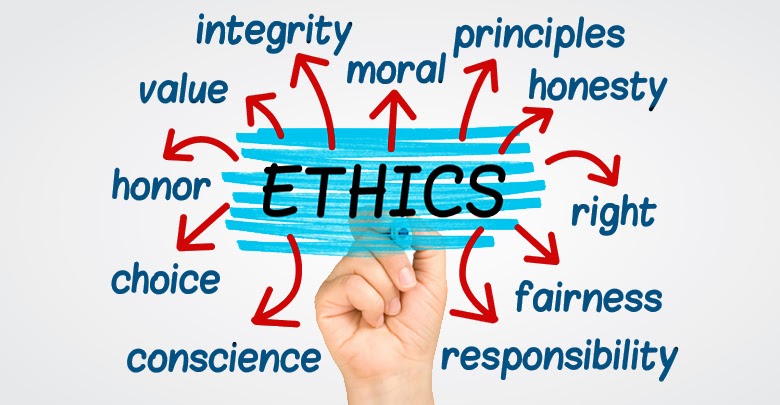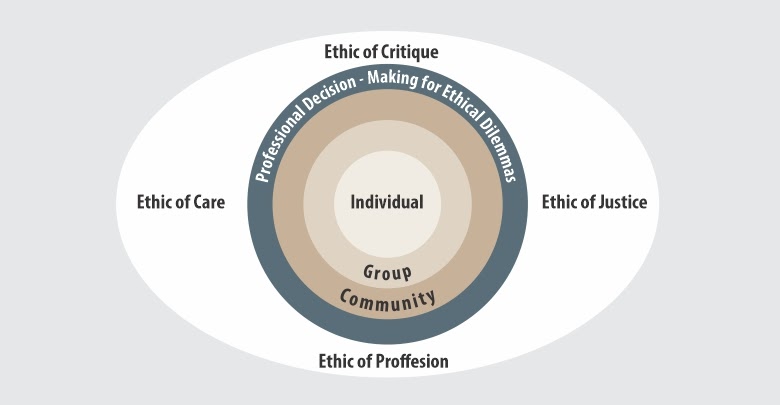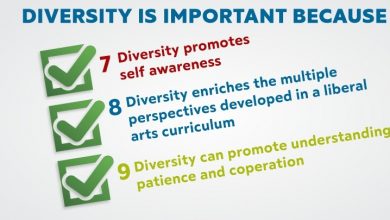Ethics
Ethics Is Behavior Guided by Values, Ideals, and Principles Ethics can be understood as guidelines that are imposed on a particular set of individuals.

Defining ethics
Brown and Paolucci (1979) suggested that ethical decision-making and moral reasoning are at the heart of the profession.
Simply stated, ethics refers to standards of behavior that tell us how human beings ought to act in the many situations in which they find themselves-as friends, parents, children, citizens, businesspeople, teachers, professionals, and so on.
Ethical competence is a person’s ability to think in the most suitable way along the heteronomy-autonomy dimension that is demanded by the moral problem at hand. It is important, nevertheless, to underline the fact that since heteronomy is the default method the difficulty lies with learning to use autonomy (Sunstein 2005; Kavathatzopoulos, 1993, 1994, 2004; see also De Martino et al., 2006; Galinsky et al., 2008; Greene et al., 2004; Koenings & Tranel, 2007). There are, however, people who have learned to use autonomy more often, usually, people at higher organizational levels or people with higher responsibility (Kavathatzopoulos & Rigas, 1998, 2006).
According to this, trainers themselves have to use more autonomous ways of thinking and acting whereas participants use heteronomous methods. A good trainer may cause and maintain heteronomy in participants since they learn to trust and follow their trainer if they provide satisfactory guidance and support. Trainers themselves, on the other hand, usually do not have access to any guidance and have to take more responsibility themselves, and, as a result, have to learn to use autonomy.
Ethical Perspectives Model
Ethical decision making is the foundation for professional training practice and is a necessary skill for a trainer to forge a path to professionalism. Here is an ethical perspective model that encourages pluralistic deliberation in arriving at professional decisions about ethical dilemmas.

Ethic of Justice
The ethic of justice is perhaps the easiest perspective to understand. This perspective upholds that moral principles have objectivism beyond cultural acceptance and that these rules or principles should be universal to maintain a right living. The perspective of justice endorses the notion that equal treatment of all individuals.
Ethics of Critique
This ethic is based on critical theory and is concerned with issues of oppression, privilege, authority, voice, language, and empowerment. It questions who has the power and wealth, and who does not.
Ethics of Care
With its focus on care, concern, and connection, the ethic of care promotes nurturing and encouragement above achievement (Noddings, 2003). It emphasizes interpersonal relationships and collaboration over competition and strives to facilitate a sense of belonging. This ethic upholds the values of loyalty and trust. Ethics of care is the fundamental basis for social justice, for civic engagement, and for improving quality of life for the individual, group and community.
Ethics of the Profession
Serving as a professional trainer, they embody the highest moral ideals of the profession and thus inspire the ideal image of the ethical character of the profession and professional. Trainers by definition are in a position of power and responsibility for participants in their plenary and the exercise of this power and responsibility requires ethical and moral decision making (Fenstermacher, 1990).
Making Ethical Decisions
Making good ethical decisions requires a trained sensitivity to ethical issues and a practiced method for exploring the ethical aspects of a decision and weighing the considerations that should impact our choice of a course of action. Having a method for ethical decision making is absolutely essential. When practiced regularly, the method becomes so familiar that we work through it automatically without consulting the specific steps.
The more novel and difficult the ethical choice we face, the more we need to rely on discussion and dialogue with others about the dilemma. Only by careful exploration of the problem, aided by the insights and different perspectives of others, can we make good ethical choices in such situations.
A Framework for Ethical Decision Making
Recognize an Ethical Issue
- Could this decision or situation be damaging for someone or a group? Does this decision involve a choice between a good and bad alternative, or perhaps between two “goods” or between two “bads”?
- Is this issue about more than what is legal or what is most efficient? If so, how?
Get the Facts
- What are the relevant facts of the case? What facts are not known? Can I learn more about the situation? Do I know enough to make a decision?
- Which individuals and groups have an important stake in the outcome? Are some concerns more important? Why?
- What are the options for acting? Have all the relevant persons and groups been consulted? Have I identified creative options?
Evaluate Alternative Actions
- Evaluate the options by asking the following questions:
- Which option will produce the most good and do the least harm? (The Utilitarian Approach)
- Which option best respects the rights of all who have a stake? (The Rights Approach)
- Which option treats people equally or proportionately? (The Justice Approach)
- Which option best serves the community as a whole, not just some members? (The Common Good Approach)
- Which option leads me to act as the sort of person I want to be? (The Virtue Approach)
Make a Decision and Test It
- Considering all these approaches, which option best addresses the situation?
- If I told someone I respect — or told a television audience — which option I have chosen, what would they say?
Act and Reflect on the Outcome
- How can my decision be implemented with the greatest care and attention to the concerns of all stakeholders?
- How did my decision turn out and what have I learned from this specific situation?
This framework for thinking ethically is the product of dialogue and debate at the Markkula Center for Applied Ethics at Santa Clara University. Primary contributors include Manuel Velasquez, Dennis Moberg, Michael J. Meyer, Thomas Shanks, Margaret R. McLean, David DeCosse, Claire André, and Kirk O. Hanson. It was last revised in May 2009.
Ethics in decision making impacts the choices for words and actions
In confining ethical decision making to a group context, decisions on ethics are necessarily limited to actions and words (e.g., no deceit in promotion, use words to manipulate performance, …). Right behavior can be evaluated through actions and words, but there is no way to know one’s thoughts. Per our distinction, thoughts, and beliefs (e.g., I want to help my participant as opposed to I want their attention without regards to what is right, personal gain at the cost of someone else’s reputation, …) will be confined to moral decisions that are part of personal decision making.
Our thoughts affect our words and deeds, and in a group context, ethics in decision making can be evaluated through the tangible evidence and outcomes from words and actions. Again, thoughts and motivation are left to the personal realm. As a consequence, the evaluation of appropriate ethical behavior will have limitations. In all outcomes there are the following possibilities:
- Right motivation with right action
- Right motivation with the wrong action
- Wrong motivation with right action
- Wrong motivation with the wrong action
Given the difficulty in exposing true motivation, ethical assessments will inherently be limited to an evaluation emphasis on action or outcome.
Will, an immoral person make an ethical decision or a moral person make an unethical decision?
Most certainly. However, those that seek to make moral personal decisions have the will or desire to seek what’s right over the long term. This will be reflected in their ethics in decision making (decisions made in the business context). There will also be the case where a person’s morals may come into conflict with the organization’s ethics. Expect this to be the greatest source of dilemmas in ethics and decision making in an organizational context.
When is the best time to address personal morals versus organization/group ethics?
The future conflict between a person’s moral choices and an organization’s / group`s ethical decisions are easily addressed as someone seeks to join the organization and/or certain group of participants. If a person is ready to join a group, he (or she) must be presented with the values and code of conduct (if available). The prospective new member must then determine if it is possible to reconcile their moral choices with the group.
Given this understanding that should exist between the group/organization and the individual, a change to the organization`s/group`s values and code of conduct should be given careful consideration. Changing the basis for the organization`s/group’s ethics in decision making, in theory, requires a new agreement with each individual to reconcile with their personal moral choices. In practice, this change can lead to conflict as an individual’s morals now lead to choices that violate the c organization`s/group’s decision making ethics.

Why did I choose this tool?
Doing the right thing has always been a difficult question to answer. In the times of radical division and extremism, ethical behavior becomes more necessary than ever. Developing ethical behavior is sometimes closely connected with human rights. Our decisions might violate someone else’s freedom and human rights. Therefore being aware of the ethics, reflection, learning and bringing awareness of this issue is critically important for trainers, and especially for the being civically engaged competence area.
Suggested Reflection Questions
Other Ways to Practice
The trainer maintains a professional demeanor in the training environment, including maintaining standards for dressing, adhering to pre-set time frames for the training, and being well organized and fully prepared for the training.
The trainer demonstrates understanding, and incorporates into practice, the values, ethics, and standards of the professions and the practice/ fields in which trainees work; and can address and reinforce these in all training activities.
The trainer models standards for adult learning and professional development, including respect for trainees; supporting trainees’ self- determination; and maintaining appropriate confidentiality, privacy, and self-disclosure.
The trainer knows the core philosophy and values that underlie the trainees’ field(s) of practice (i.e. regulation, program or center administration, child welfare, adult services, public human services, special education, child psychology, etc.); and can integrate this information throughout the training.
The trainer can articulate the concepts of best practice in the fields of early childhood education and family services and knows the unique role and responsibility of the trainees’ programs, agency(ies) and staff.
The trainer knows the “best practice” standards that apply to the field of practice and competency area s/he trains.
The trainer fully understands the liabilities of attempting to train in competency areas in which the trainer lacks sufficient knowledge, skill, and/or first-hand experience.
The trainer understands the importance of keeping current on laws, state mandates, and practice changes in the fields/related fields of early childhood education and family services, and can incorporate up-to-date information into training curricula.
The trainer knows the laws regarding copyright and plagiarism and knows how to fully and accurately cite sources for materials used in the curriculum.
Exercises:
Ethics is a very important method used for both sides, the trainer and the participants.
The rules given at the very beginning of the training can be one part of the ethics, but following them afterwards and reminding the participants to follow them too (or their reminders for the rest) can be the other part to fully fill this task.
Example of a case study activity
Telling the truth
Invite participants to consider the following case, taken from Robbins, Stephen P. and David A. De Cenzo (1998). Fundamentals of management: Essential concepts and applications (2nd ed.). New Jersey: Prentice-Hall, p. 28.
One of your employees has just been diagnosed with a treatable form of cancer. He has confided in you about the status of his health. He has also asked you not to say a word to anyone because he considers his health to be a personal matter. Over the next few months, this employee is absent frequently, especially during his radiation treatments. His absences are not a major problem for the company because his duties involve direct computer work which he can do while at home. However, some of your other employees have asked you what’s wrong with him. You politely decline to discuss his situation. As a result, the other employees think that their co-worker is getting special treatment, and are ready to go to your boss to complain. You are confident that if they only knew of the employee’s illness, they would understand. But you promised him not to reveal the reason for his absence. At the same time, it would create unnecessary and unhelpful problems for him if other employees complain about him.
Ask participants to discuss the following questions:
- Should you reveal to your employees the reason for their co-worker’s absence? Why or why not?
- Should you explain to your boss what is really going on?
· How would you handle this situation?






